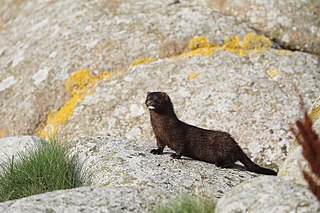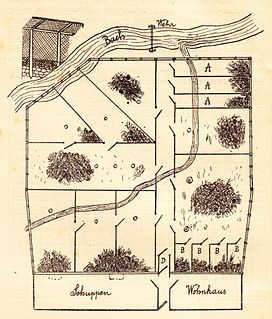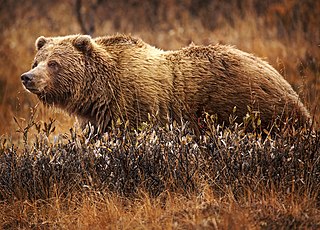Related Research Articles

Fur seals are any of nine species of pinnipeds belonging to the subfamily Arctocephalinae in the family Otariidae. They are much more closely related to sea lions than true seals, and share with them external ears (pinnae), relatively long and muscular foreflippers, and the ability to walk on all fours. They are marked by their dense underfur, which made them a long-time object of commercial hunting. Eight species belong to the genus Arctocephalus and are found primarily in the Southern Hemisphere, while a ninth species also sometimes called fur seal, the northern fur seal, belongs to a different genus and inhabits the North Pacific.

The Mustelidae are a family of carnivorous mammals, including weasels, badgers, otters, ferrets, martens, minks, and wolverines, among others. Mustelids are a diverse group and form the largest family in the order Carnivora, suborder Caniformia. Mustelidae comprises about 56–60 species across eight subfamilies.

An eared seal or otariid or otary is any member of the marine mammal family Otariidae, one of three groupings of pinnipeds. They comprise 15 extant species in seven genera and are commonly known either as sea lions or fur seals, distinct from true seals (phocids) and the walrus (odobenids). Otariids are adapted to a semiaquatic lifestyle, feeding and migrating in the water, but breeding and resting on land or ice. They reside in subpolar, temperate, and equatorial waters throughout the Pacific and Southern Oceans and the southern Indian and Atlantic Oceans. They are conspicuously absent in the north Atlantic.

The Psychedelic Furs are a British new wave band founded in London in February 1977. Led by singer Richard Butler and his brother Tim Butler on bass guitar, the Psychedelic Furs are one of the many acts spawned from the British post-punk scene. Their music went through several phases, from an initially austere art rock sound, to later touching on new wave and hard rock.

The furry fandom is a subculture interested in anthropomorphic animal characters with human personalities and characteristics. Examples of anthropomorphic attributes include exhibiting human intelligence and facial expressions, speaking, walking on two legs, and wearing clothes. The term "furry fandom" is also used to refer to the community of people who gather on the internet and at furry conventions.

Mink are dark-colored, semiaquatic, carnivorous mammals of the genera Neovison and Mustela, and part of the family Mustelidae, which also includes weasels, otters and ferrets. There are two extant species referred to as "mink": the American mink and the European mink. The extinct sea mink is related to the American mink but was much larger. The American mink is larger and more adaptable than the European mink but, due to variations in size, an individual mink usually cannot be determined as European or American with certainty without looking at the skeleton. However, all European mink have a large white patch on their upper lip, whereas only some American mink have this marking. Therefore, any mink without the patch is certainly of the American species. Taxonomically, both American and European mink were placed in the same genus Mustela but the American mink has since been reclassified as belonging to its own genus, Neovison.

Chinchillas are either of two species of crepuscular rodents of the parvorder Caviomorpha. They are slightly larger and more robust than ground squirrels, and are native to the Andes mountains in South America. They live in colonies called "herds" at high elevations of up to 4,270 m (14,000 ft). Historically, chinchillas lived in an area that included parts of Bolivia, Peru, Argentina, and Chile, but today, colonies in the wild are known only in Chile. Along with their relatives, viscachas, they make up the family Chinchillidae. They are also related to the chinchilla rat.

A mountain man is an explorer who lives in the wilderness. Mountain men were most common in the North American Rocky Mountains from about 1810 through to the 1880s. They were instrumental in opening up the various Emigrant Trails allowing Americans in the east to settle the new territories of the far west by organized wagon trains traveling over roads explored and in many cases, physically improved by the mountain men and the big fur companies originally to serve the mule train based inland fur trade.

The raccoon dog, also known as the mangut, tanuki or neoguri, is a canid indigenous to East Asia. It is the only extant species in the genus Nyctereutes. Despite its name, its closest relatives are the true foxes, and not the American raccoons.

The sable is a species of marten, a small omnivorous mammal primarily inhabiting the forest environments of Russia, from the Ural Mountains throughout Siberia, and northern Mongolia. Its habitat also borders eastern Kazakhstan, China, North Korea and Hokkaidō, Japan. Its range in the wild originally extended through European Russia to Poland and Scandinavia. Historically, it has been hunted for its highly valued dark brown or black fur, which remains a luxury good to this day. While hunting is still common in Russia, most fur on the market is now commercially farmed.

Barrow-in-Furness is a town in Cumbria, North-West England. Historically part of Lancashire, it was incorporated as a municipal borough in 1867 and merged with Dalton-in-Furness Urban District in 1974 to form the Borough of Barrow-in-Furness. At the tip of the Furness peninsula, close to the Lake District, it is bordered by Morecambe Bay, the Duddon Estuary and the Irish Sea. In 2011, Barrow's population was 57,000, making it the second largest urban area in Cumbria after Carlisle. Natives of Barrow, as well as the local dialect, are known as Barrovian.

Fur farming is the practice of breeding or raising certain types of animals for their fur.

The fur trade is a worldwide industry dealing in the acquisition and sale of animal fur. Since the establishment of a world fur market in the early modern period, furs of boreal, polar and cold temperate mammalian animals have been the most valued. Historically the trade stimulated the exploration and colonization of Siberia, northern North America, and the South Shetland and South Sandwich Islands.

Fur clothing is clothing made of furry animal hides. Fur is one of the oldest forms of clothing, and is thought to have been widely used as hominids first expanded outside Africa. Some view fur as luxurious and warm; others reject it due to moral concerns for animal rights. The term 'fur' is often used to refer to a coat, wrap, or shawl made from the fur of animals. Controversy exists regarding the wearing of fur coats, due to animal cruelty concerns. The most popular kinds of fur in the 1960s were blond mink, silver striped fox and red fox. Cheaper alternatives were pelts of wolf, Persian lamb or muskrat. It was common for ladies to wear a matching hat. In the 1950s, a must-have type of fur was the mutation fur and fur trimmings on a coat that were beaver, lamb fur, Astrakhan and mink.

Fur is a thick growth of hair that covers the skin of many different animals. It is a defining characteristic of mammals. It consists of a combination of oily guard hair on top and thick underfur beneath. The guard hair keeps moisture from reaching the skin; the underfur acts as an insulating blanket that keeps the animal warm.

The North American fur trade, an aspect of the international fur trade, was the acquisition, trade, exchange, and sale of animal furs in North America. Aboriginal peoples and Native Americans of various regions of the present-day countries of Canada and the United States traded among themselves in the pre–Columbian Era. Europeans participated in the trade from the time of their arrival to Turtle Island, commonly referenced as the New World, extending the trade's reach to Europe. The French started trading in the 16th century, the English established trading posts on Hudson Bay in present-day Canada during the 17th century, while the Dutch had trade by the same time in New Netherland. The North American fur trade reached its peak of economic importance in the 19th century, and involved the development of elaborate trade-networks.
Paramantis prasina is the type species of praying mantis in the genus Paramantis.
P. prasina may refer to:
References
- ↑ Unterlagen für eine Monographie der Mantodea (Insecta) des südlichen Afrika: 2. Bestimmungstabellen für die höheren Taxa, Nachträge zum Artenbestand.
| | This Mantidae-related article is a stub. You can help Wikipedia by expanding it. |